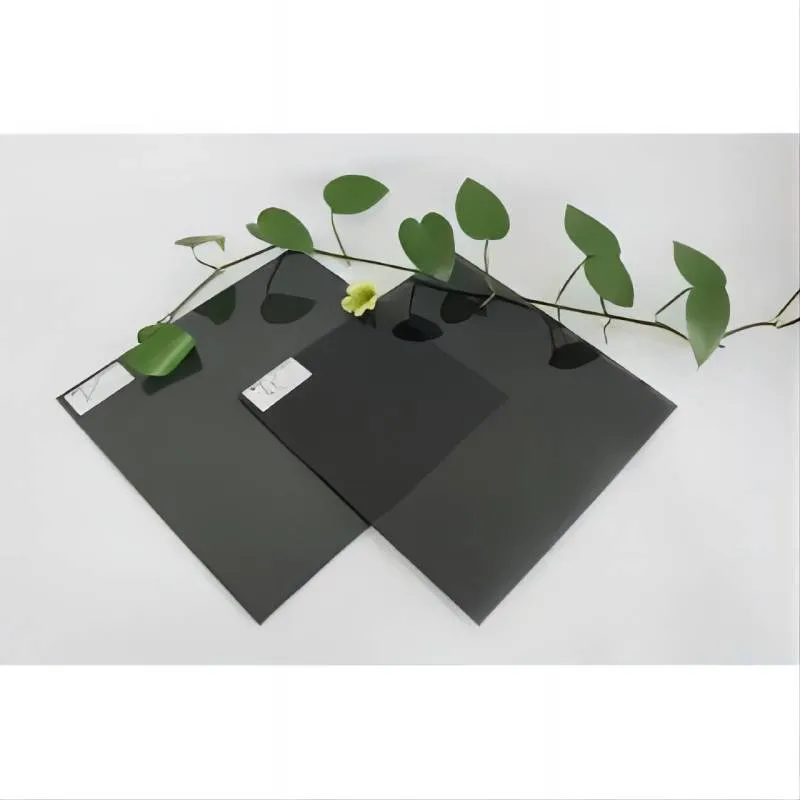The Aesthetic and Functional Appeal of Tinted Glass Colors
In modern architecture, tinted glass has emerged as a focal point, offering both aesthetic appeal and functional benefits. The spectrum of tinted glass colors available today provides architects and designers with an array of options to enhance the visual impact of buildings while also contributing to energy efficiency and occupant comfort. This article discusses the significance of tinted glass colors, their applications, and the psychological effects they evoke.
Understanding Tinted Glass
Tinted glass is produced by adding metallic oxides to the glass during the manufacturing process, resulting in various shades and colors. The primary purpose of tinted glass is to control the amount of sunlight entering a building, reducing glare and heat absorption. Different colors have distinct properties, providing options that can cater to specific needs, whether it be for solar control, privacy, or aesthetic enhancement.
Popular Tinted Glass Colors
1. Gray Gray tinted glass is perhaps the most commonly used shade in commercial and residential projects. It offers a neutral appearance that blends well with various architectural styles. This color effectively reduces glare, making it a popular choice for office buildings and homes with large windows.
2. Bronze Bronze tinted glass gives a warm, sophisticated look while also minimizing heat and glare. Its rich, earthy tone complements many building materials, particularly wood and stone. This color is often used in commercial spaces as well as upscale residential properties to create a sense of elegance.
3. Blue Blue tinted glass can evoke feelings of tranquility and calmness. It is frequently seen in coastal architecture, where it reflects the natural hues of the sea and sky. Beyond aesthetics, blue glass offers good solar control and is effective in increasing visual comfort inside the building.
4. Green Green tinted glass is associated with nature and sustainability. It is often used in eco-friendly buildings and can enhance energy efficiency. This color not only promotes a fresh atmosphere but also allows for a connection with the natural surroundings, making it a popular choice for structures situated in lush environments.
5. Reflective Tints Reflective tinted glass, available in various colors such as silver or gold, serves a dual purpose. It not only reduces heat and glare but also enhances privacy by limiting visibility from the outside while allowing clear views from the inside. This type of glass is commonly utilized in high-rise buildings and commercial facades.
tinted glass colors
Benefits of Tinted Glass Colors
The benefits of tinted glass go beyond mere aesthetics. The most notable advantages include
- Energy Efficiency Tinted glass helps in reducing heat gain and glare, which can significantly lower reliance on air conditioning. This contributes to energy savings and a more environmentally friendly building.
- Comfort By controlling the amount of sunlight entering a space, tinted glass creates a more comfortable indoor environment. Employees and occupants benefit from decreased glare on screens and surfaces, leading to enhanced productivity and well-being.
- UV Protection Tinted glass can block up to 99% of harmful ultraviolet rays, protecting furniture, artwork, and flooring from fading. This durability extends the life of interior elements and improves the overall sustainability of the building.
- Enhanced Privacy and Security Certain tinted glasses provide added privacy for building occupants. The reflective qualities of some tints deter unwanted gazes, making them ideal for offices, hospitals, and residences.
The Psychological Impact of Color
Colors influence not only aesthetic choices but also human emotions and psychology. For instance, blue can inspire creativity, while green promotes relaxation. Therefore, the selection of tinted glass colors can play a crucial role in shaping the experience within a building, reinforcing its purpose and enhancing users’ overall satisfaction.
Conclusion
The selection of tinted glass colors in architecture goes beyond choosing a shade; it embodies a harmonious blend of aesthetics, functionality, and psychological impact. As designers and architects continue to explore new possibilities with tinted glass, these colorful panes will undoubtedly remain integral to creating environments that are both beautiful and sustainable. As we move into a future where design must marry functionality with ecological responsibility, tinted glass stands as a symbol of modern innovation in the built environment.
 Afrikaans
Afrikaans  Albanian
Albanian  Amharic
Amharic  Arabic
Arabic  Armenian
Armenian  Azerbaijani
Azerbaijani  Basque
Basque  Belarusian
Belarusian  Bengali
Bengali  Bosnian
Bosnian  Bulgarian
Bulgarian  Catalan
Catalan  Cebuano
Cebuano  Corsican
Corsican  Croatian
Croatian  Czech
Czech  Danish
Danish  Dutch
Dutch  English
English  Esperanto
Esperanto  Estonian
Estonian  Finnish
Finnish  French
French  Frisian
Frisian  Galician
Galician  Georgian
Georgian  German
German  Greek
Greek  Gujarati
Gujarati  Haitian Creole
Haitian Creole  hausa
hausa  hawaiian
hawaiian  Hebrew
Hebrew  Hindi
Hindi  Miao
Miao  Hungarian
Hungarian  Icelandic
Icelandic  igbo
igbo  Indonesian
Indonesian  irish
irish  Italian
Italian  Japanese
Japanese  Javanese
Javanese  Kannada
Kannada  kazakh
kazakh  Khmer
Khmer  Rwandese
Rwandese  Korean
Korean  Kurdish
Kurdish  Kyrgyz
Kyrgyz  Lao
Lao  Latin
Latin  Latvian
Latvian  Lithuanian
Lithuanian  Luxembourgish
Luxembourgish  Macedonian
Macedonian  Malgashi
Malgashi  Malay
Malay  Malayalam
Malayalam  Maltese
Maltese  Maori
Maori  Marathi
Marathi  Mongolian
Mongolian  Myanmar
Myanmar  Nepali
Nepali  Norwegian
Norwegian  Norwegian
Norwegian  Occitan
Occitan  Pashto
Pashto  Persian
Persian  Polish
Polish  Portuguese
Portuguese  Punjabi
Punjabi  Romanian
Romanian  Russian
Russian  Samoan
Samoan  Scottish Gaelic
Scottish Gaelic  Serbian
Serbian  Sesotho
Sesotho  Shona
Shona  Sindhi
Sindhi  Sinhala
Sinhala  Slovak
Slovak  Slovenian
Slovenian  Somali
Somali  Spanish
Spanish  Sundanese
Sundanese  Swahili
Swahili  Swedish
Swedish  Tagalog
Tagalog  Tajik
Tajik  Tamil
Tamil  Tatar
Tatar  Telugu
Telugu  Thai
Thai  Turkish
Turkish  Turkmen
Turkmen  Ukrainian
Ukrainian  Urdu
Urdu  Uighur
Uighur  Uzbek
Uzbek  Vietnamese
Vietnamese  Welsh
Welsh  Bantu
Bantu  Yiddish
Yiddish  Yoruba
Yoruba  Zulu
Zulu 

